Explain:
a. -Halocarbonyl compounds, even the types like  , do not undergo reaction.
, do not undergo reaction.
b. Which is more reactive: (i) PrCI or (ii) with NaI/acetone ?
c. Acetals and ketals are regenerated back to carbonyl. compounds with but not with .
d. Cyclohexane is more reactive than cyclopenatone with HCN.
a. In the first step of reaction, a carbocation is formed. The carbocation formed is unstable is due to the presence of positive charges on adjacent C atoms.

b. Both are and undergo reaction.
Reactivity of (ii) gtgt (i). The high reactivity of (ii) in reaction is due to the stabilising effect produced in the transition state of ketone by the overlap of adjacent -bond with the p-orbital of the -hybridised C atom. This type of overlap is also responsible for the high reactivity of allyl halides in reaction.
i. 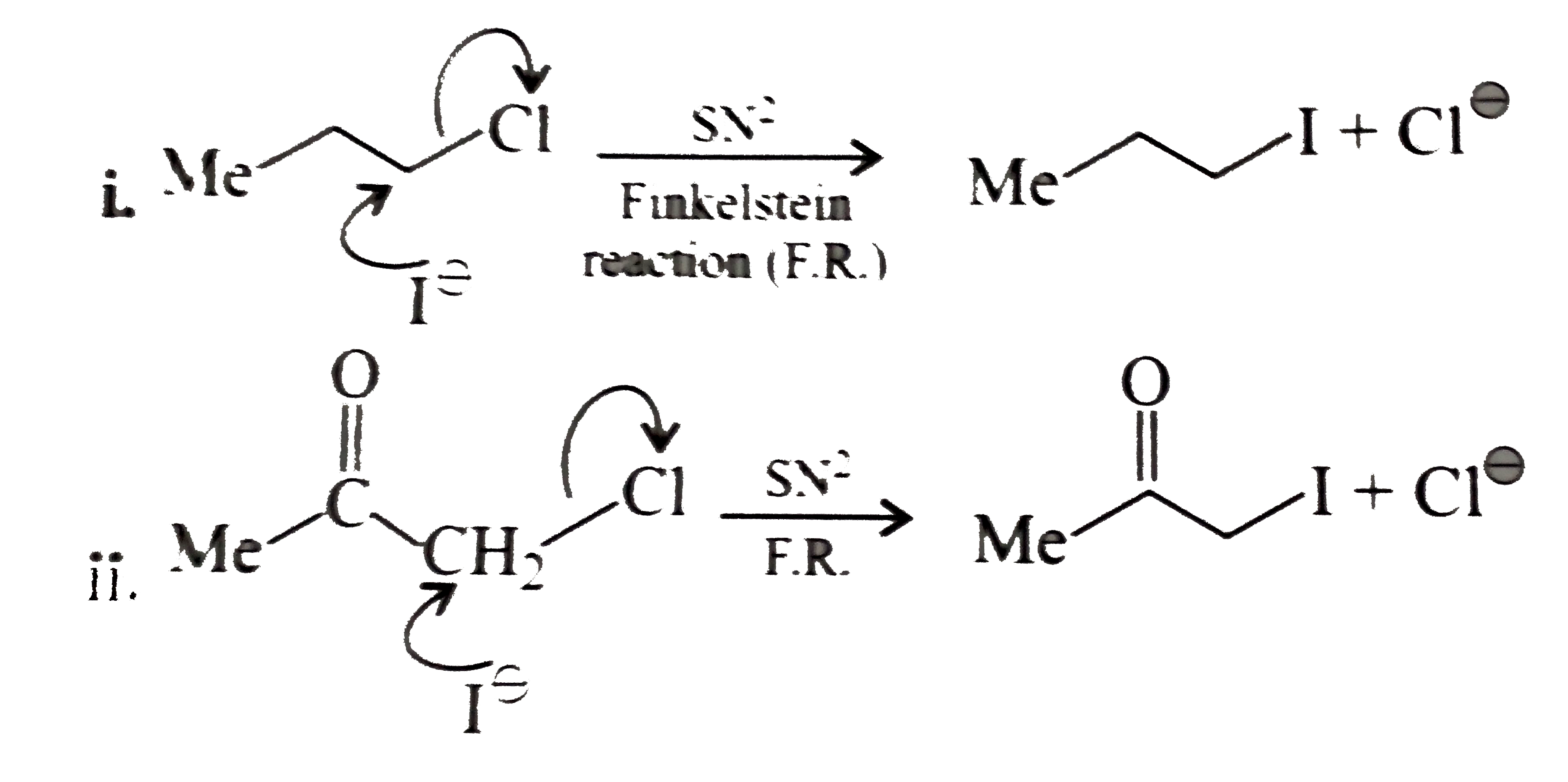
ii. 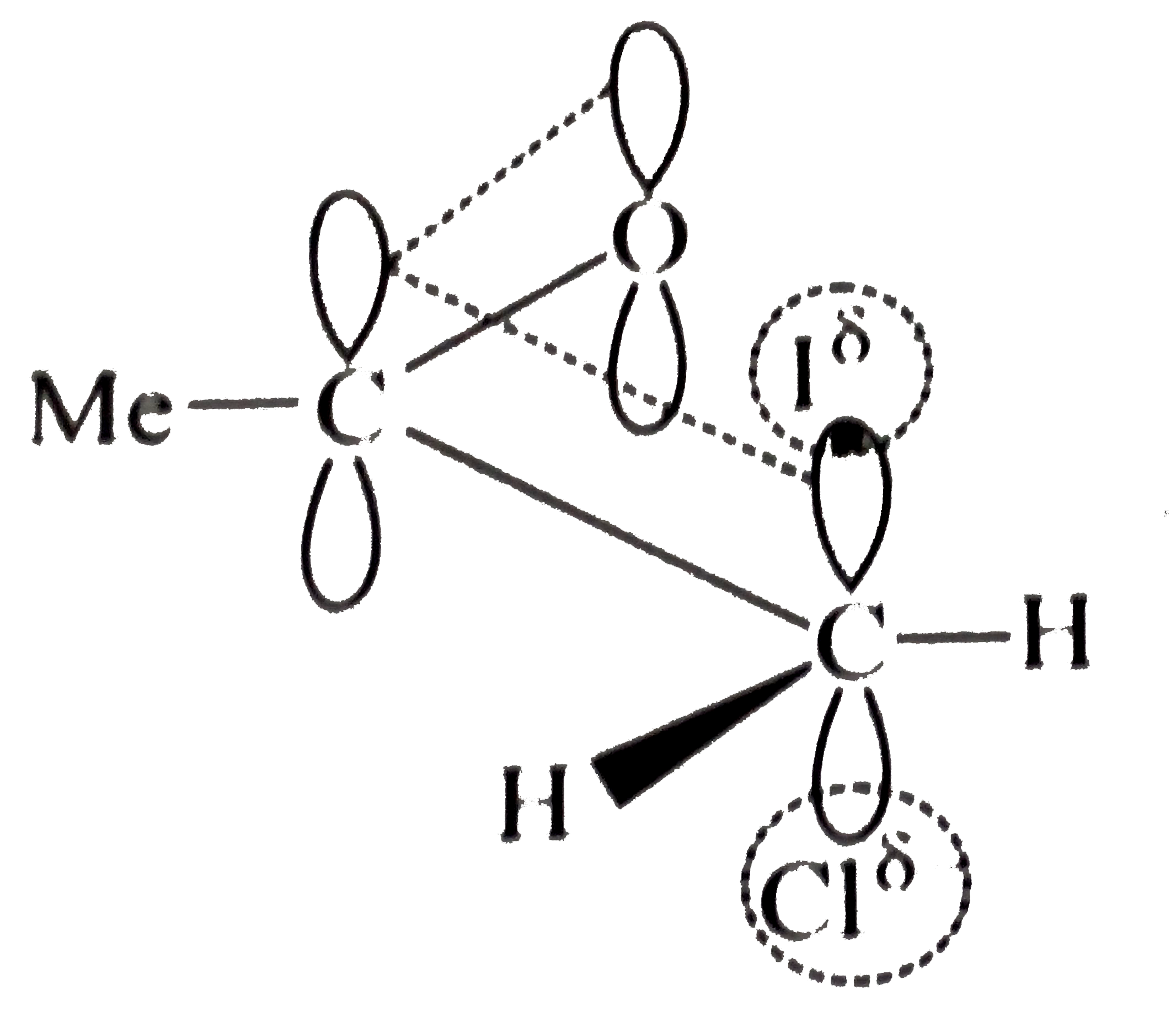
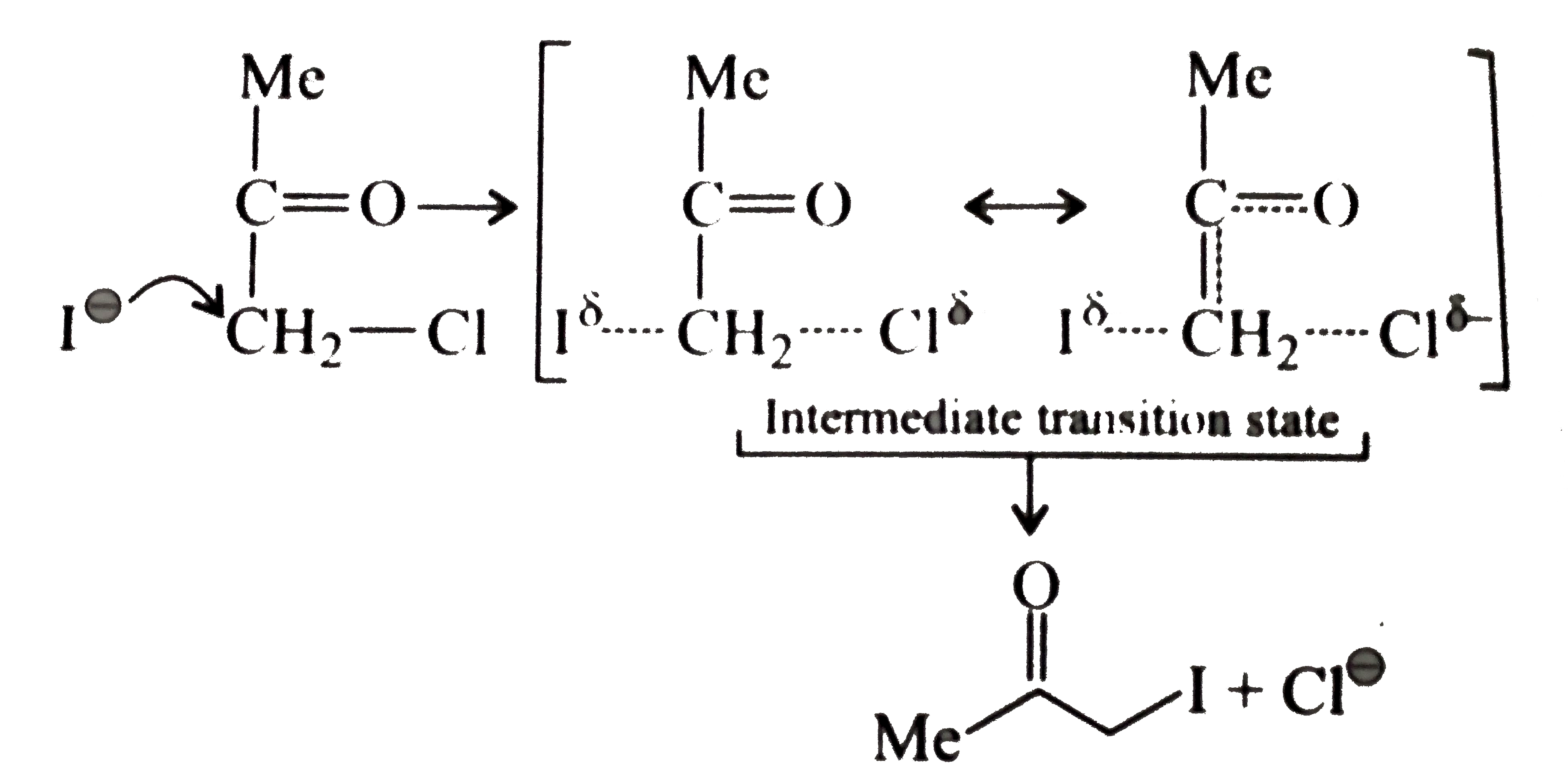
c. The formation of hemiacetal or half hydrate takes place in acid only. Its not possible in base because a weaker base cannot displace stronger base . But the formation of acetal form hemiacetal can take place by both acid and base. So reverse process of hemiacetal to compound can occur only with acid but not with base.
d. 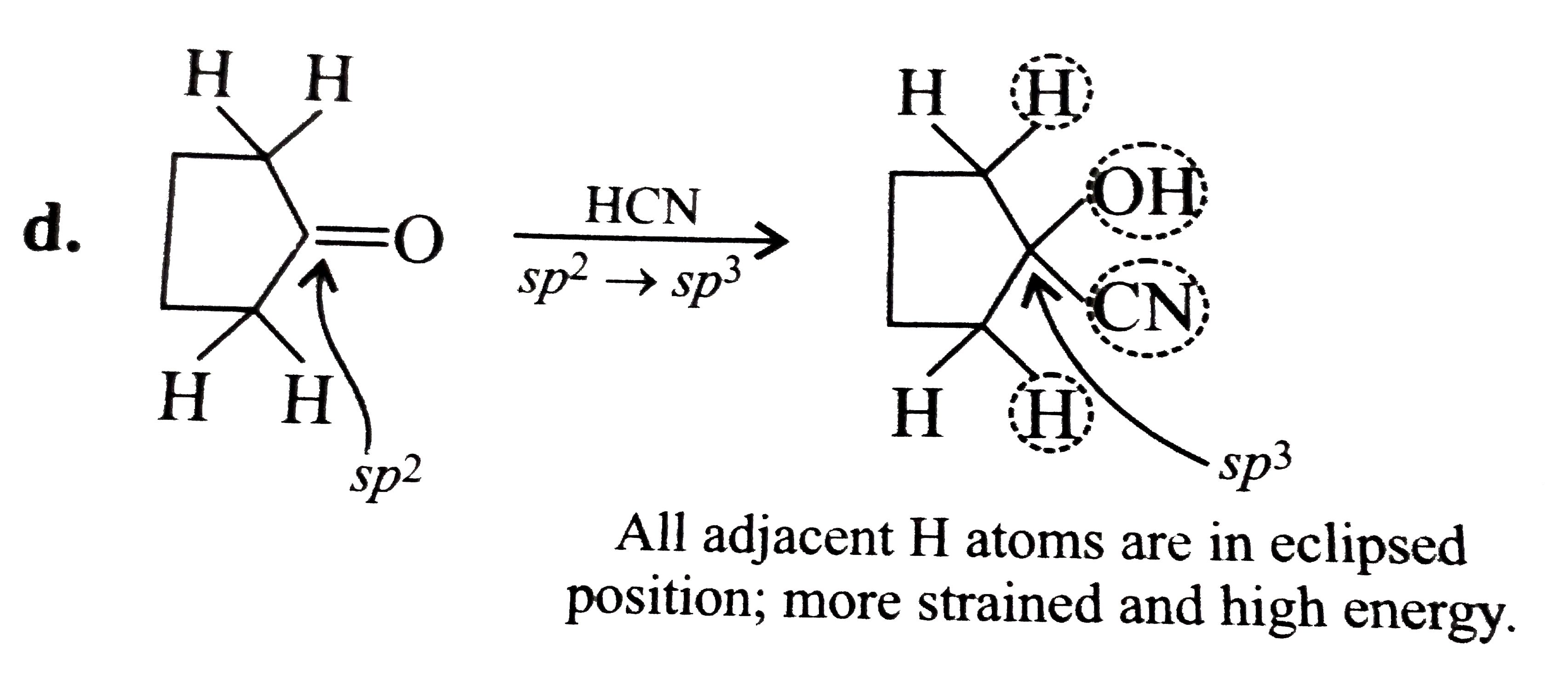
i. In cyclopentanone, the hybridisation of C atom of group change form , which increases the strain due to eclipsing interaction.
ii. In cyclohexane, the hybridisation of C atom of group changes form , but destabilisation effect is lost as there is no eclipsing interaction.
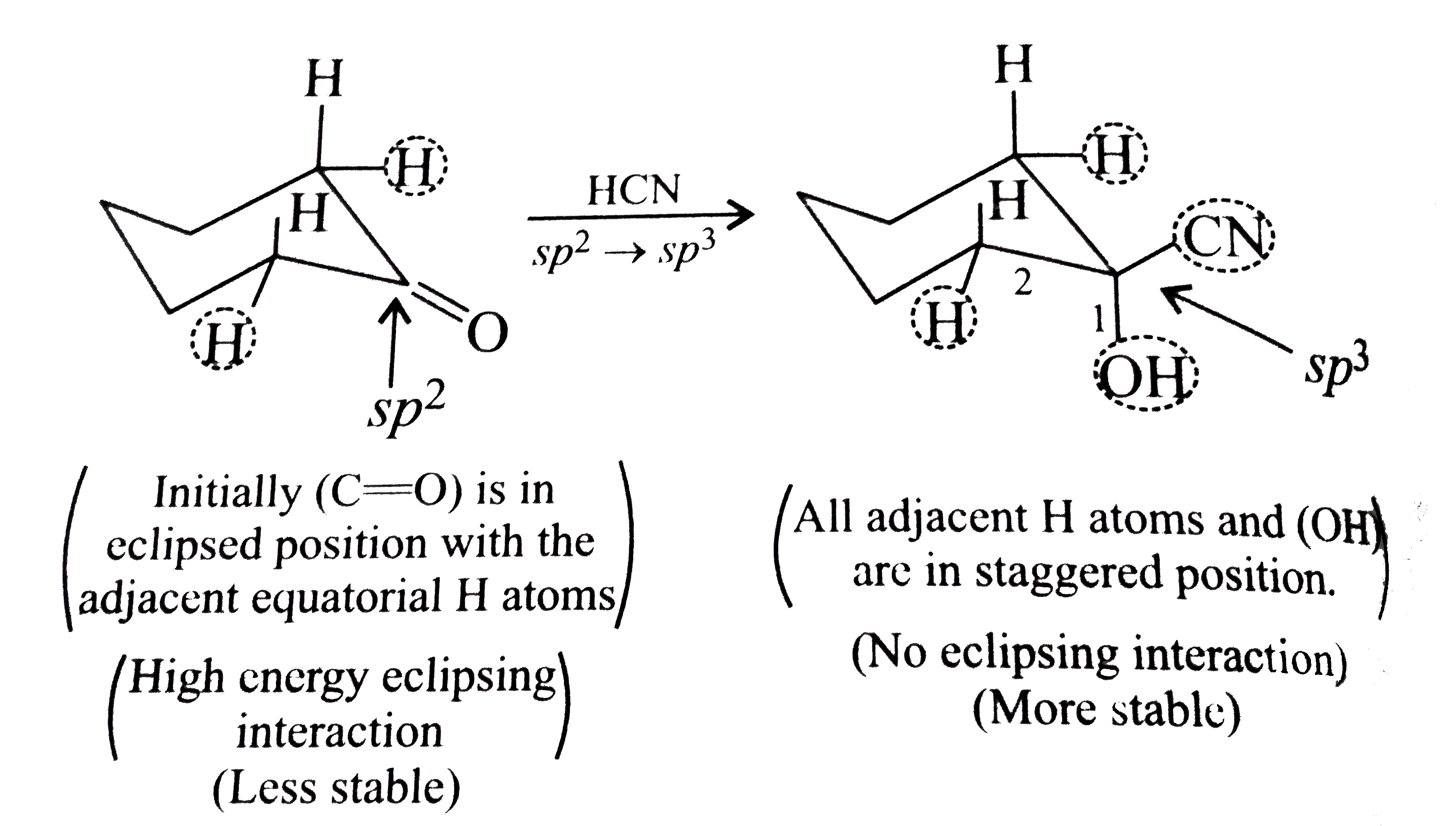
Topper's Solved these Questions
- ALIPHATIC AND AROMATIC ALDEHYDES AND KETONESBOOK - CENGAGE CHEMISTRYCHAPTER - ALIPHATIC AND AROMATIC ALDEHYDES AND KETONESEXERCISE - Exercises Subjective
52 Videos
- ALIPHATIC AND AROMATIC ALDEHYDES AND KETONESBOOK - CENGAGE CHEMISTRYCHAPTER - ALIPHATIC AND AROMATIC ALDEHYDES AND KETONESEXERCISE - Exercises Concept Application
20 Videos
- ALIPHATIC AND AROMATIC ALDEHYDES AND KETONESBOOK - CENGAGE CHEMISTRYCHAPTER - ALIPHATIC AND AROMATIC ALDEHYDES AND KETONESEXERCISE - Archives Subjective
29 Videos
- ALCOHOL,PHENOL AND ETHERSBOOK - CENGAGE CHEMISTRYCHAPTER - ALCOHOL,PHENOL AND ETHERSEXERCISE - Archives Analytical And Descriptive
15 Videos
- AMINESBOOK - CENGAGE CHEMISTRYCHAPTER - AMINESEXERCISE - QUESTION BANK
1 Videos
Similar Questions
Give the mechanism of cyanohydrin formation when carbonyl compounds react with HCN in the presence of alkali.
(b) Why CH3CHO is more reactive than CH3COCH3 towards reaction with HCN?
View SolutionWhich is more reactive in each pair towards SN reaction ?
(A) CH3O∣∣CCl or CH3Cl (B)_E01_776_Q01.png)
(C) CH3O∣∣C∞verset(O)∣∣CCH3 or CH3OCH3
View Solution
Knowledge Check
Statement-1: Ethyne is more reactive than ethene towards hydrogenation
Statement-2: H2 in presence of Lindlar catalyst is more reactive than H2 with Pd in hydrogenation reaction
Statement-3: Dipole moment of o-xylene is greater than m-xyleneAT F TBF T FCF F TDT T FWhich of the compound in each of the following pairs will react faster in SN2 reaction with ӨOH
(A) MeBr(I)andMeI(II)
(B) Me3C−Cl(III)andMeCl(IV)
 .A(A)(I)(B)(III)(C)(V)B(A)(I)(B)(IV)(C)(V)C(A)(II)(B)(III)(C)(VI)D(A)(II)(B)(IV)(C)(VI)
.A(A)(I)(B)(III)(C)(V)B(A)(I)(B)(IV)(C)(V)C(A)(II)(B)(III)(C)(VI)D(A)(II)(B)(IV)(C)(VI)In the reaction
CH3−C2H5∣C=O+HCN→AH2O+−−−→B
The compound B isAit is a tautomer of ketoneBit is a functional isomer of ketoneCdo not show optical activityDshow optical activity
a. Epoxides of α,β-unsaturated carbonyl compounds can be formed by peroxy acid as well as with H2O2/OΘH. Explain the formation of epoxides in both cases.
b. Acrolein (CH2=CH−CHO) is epoxidised much more rapidly with H2O2/ΘOH than with a peroxy acid. Explain why.
View SolutionDraw the structures of the following :
(i) H2S2O7
(ii) HClO3
(b) Explain the following observations :
(i) In the structure of HNO3 the N-O bond (121 pm) is shorter than the N-OH bond (140 pm).
(ii) All the P- Cl bonds in PCl5 are not equivalent.
(iii) ICl is more reactive than I2 .
View Solutiona. Why do nucleophiles (Nu..Θ) add to the (C=C) of α−β-unsaturated carbonyl compounds but not to alkenes ?
b. Explain the formation of product in the following reaction:
CH3CH=(A)CHCHOΘOD/D2O−−−−−→CD3CH=CD.CHO(Tetradecuterated compound)(B)
c. In the following reaction, three isomers are present in the equilibrium. Which is the most stable ?
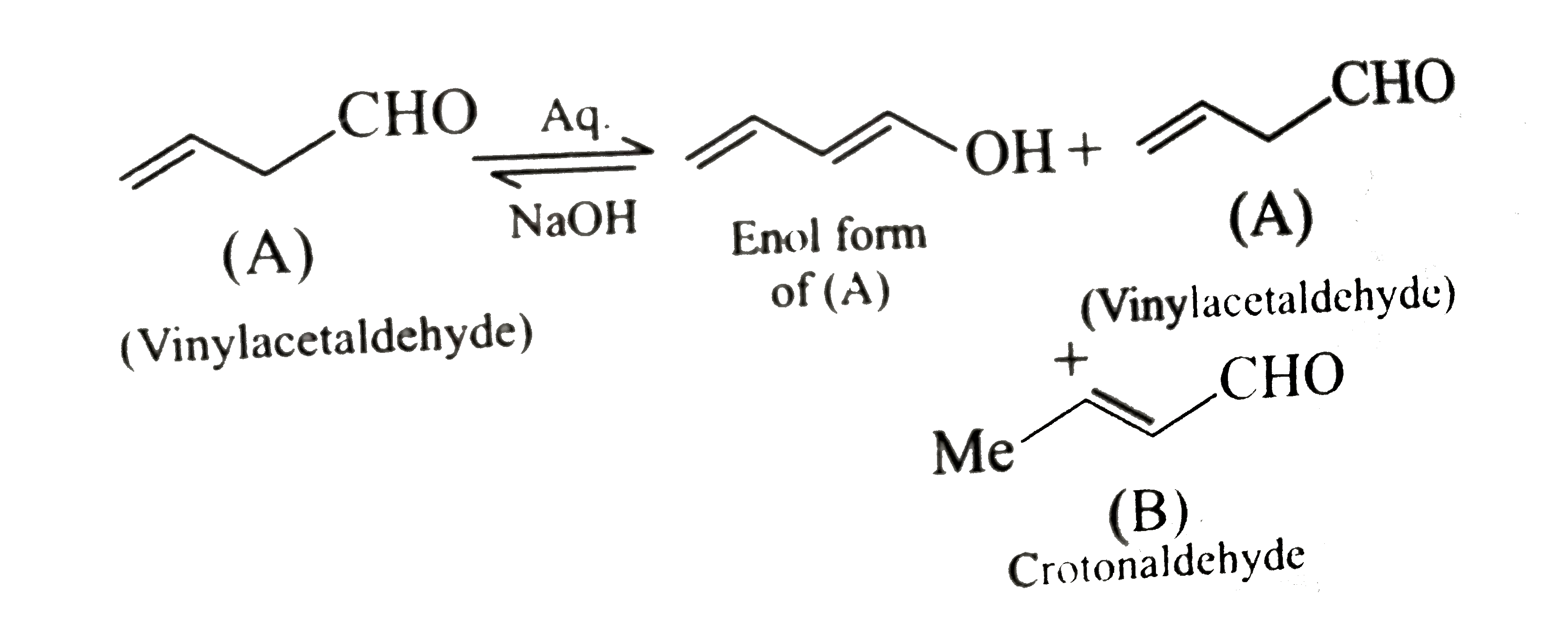
d. Explain why Michael addition is 3,4-addition.
View Solution(a) Account for the following :
(i) Acidic character increases from H2O to H2Te.
(ii) F2 is more reactive than ClF3 , whereas ClF3 is more reactive than Cl2.
(b) Draw the structure of (i) XeF2, (ii) XeOF4
(c) Give one example to show the anomalous reaction of fluorine.
View SolutionThe additon reaction of enol or enolate to the carbonyl function of aldehyde or ketone is known as aldol addition . The β-hydroxyaldehyde or β−hydroxyketone so obtained undergo dehydration in second step to produce a conjugated enone. The first part of reaction is an addition reaction and the second part is an elimination reaction. Carbonyl compound having α-hydrogen undergoes aldol condensation reaction .
2CH3CH2−O∣∣C−HӨOH−−→ΔCH3CH2CH=C∣CH3−O∣∣C−H
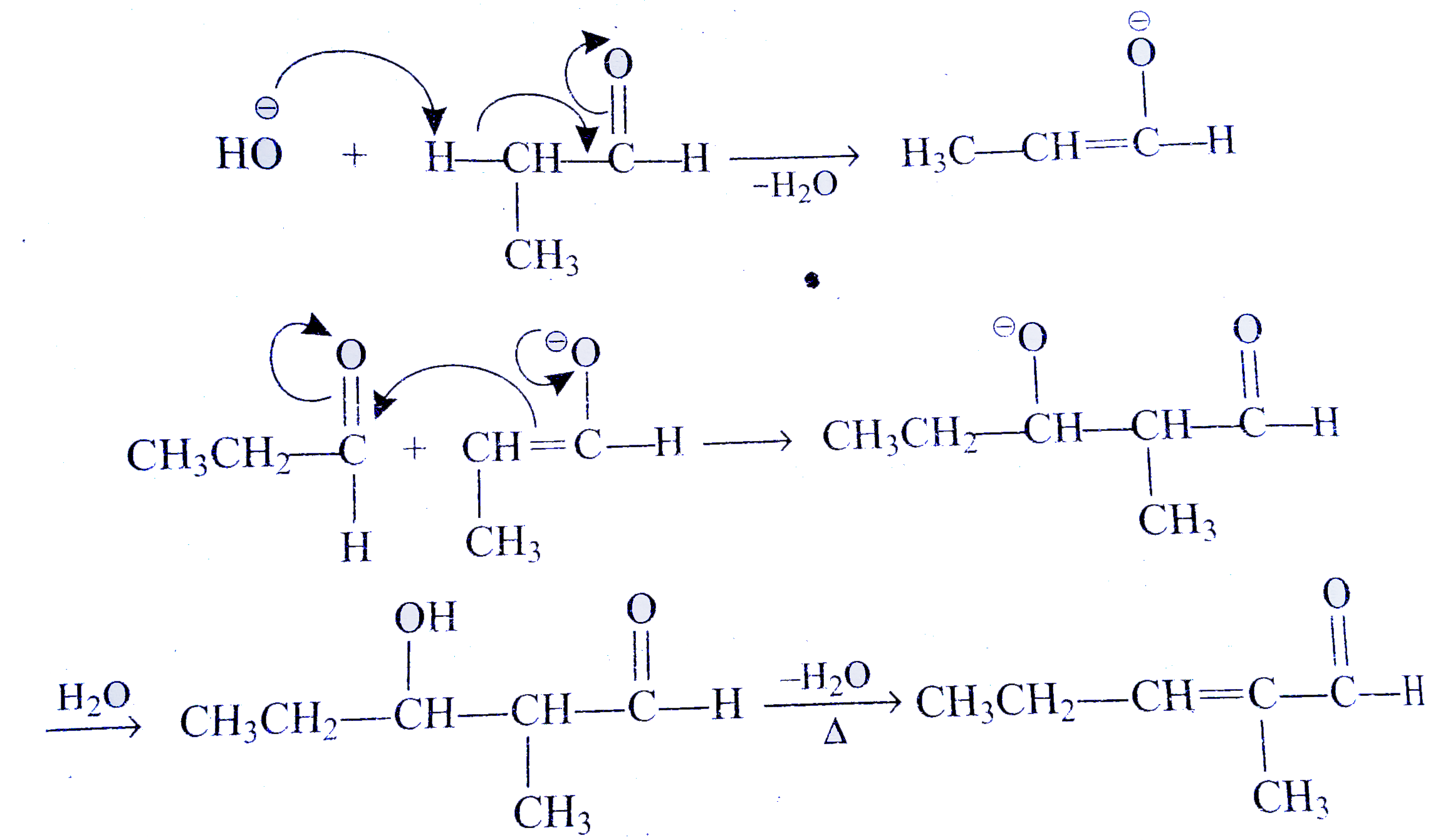
Which of the following will give aldol condensation ?
View Solution
